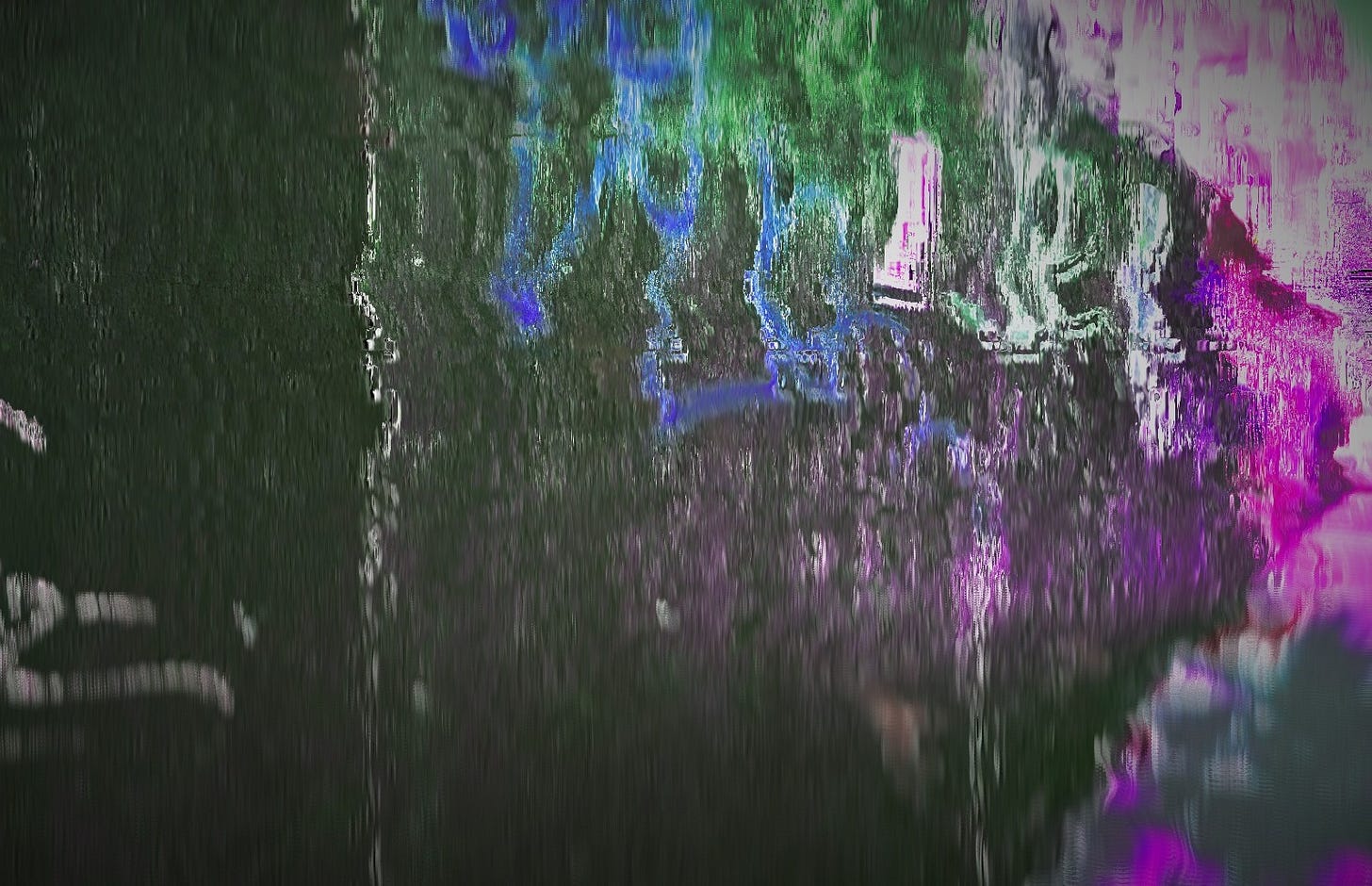Say you’re walking right along one of those green barriers to a construction site. At the end of the street, beyond where this plane of the barriers end, you assume that when you turn the corner there will be more barriers stretching down the rest of the property beside you. This assumption is not one your mind has the day-to-day capacity to question, not really — because if you were to turn the corner and find not only that the barrier didn’t continue around the corner, but that the back sides and volumes of the boards you are passing aren’t there, you’d suffer worse than confusion. Your body isn’t built to handle that level of epistemological offense to its plain Euclidean physics.
You’ve felt what it’s like when you’ve found something maddening — in your brain. Imagine your muscles, nerves, viscera, and endocrine system equally as maddened, a nausea threatening not just vomit but the ejecta and remainders of all those forces, emissions, and wavelengths that hold you together as an entity, being that ‘entity’ is what you fathom yourself to be, definitively singular and whole, body and mind and feelings and personality. There’s nausea and then there’s violation.
This is why the city built the construction barriers around the Vacancy in the first place, for there were no citizens who could walk by it without taking such offense.
When the Vacancy occurred — for ‘occurred’ seems somehow closer to describe its advent than ‘appeared’, though most agree the Vacancy mostly translated in the brain as a visual phenomenon before all the other senses followed inexorably after, like chain rings rigged to an anchor sinking into the abyss — the mobilization was quick, but the work took decades.
The first barriers were placed alongside the length of the property that faced the busy commuter and shopping avenue. They were relatively easy to set up, just as long as the construction workers kept their backs to the Vacancy. The barriers on the side street took years to figure out, not only nullifying all foot- and car-traffic but causing all Vacancy-facing domiciles in any direction to empty completely.
The problem is you can’t create an angle to the plane the Vacancy had made of the initial barriers, since they lacked depth and volume. On the street-facing side, the barriers held normal color and texture; the green paint, at least, three-dimensional in its little divots and dried bubbles, particles and flakes giving off the usual smells, mixed with the dog urine happily micturated by puppers disabused of the Vacancy on the other side.
The backside of the barriers, however, weren’t. Gone was the color for there was no volume nor texture nor surface for the light to refract from, or at least it seemed upon any glance any person could muster, which they couldn’t. Gone would have been texture had any human the fortitude to reach into, which the epistemes of the space wouldn’t allow. No smell or sound either. It was more like what people expected to not see if they could have glanced, now that the expectation that seeing the back of the barriers no longer held.
Only those who had never been near the Vacancy would voice the objection that if one line of barriers went up, the second line of barriers should be able to go up in the same manner; “Hell,” City Counselor Phil Aston was recorded as saying, “even if the workers have to keep their back to it like they did before.” Such was the logic of spacetime the Vacancy violently denied.
Keep reading with a 7-day free trial
Subscribe to Indulging a Second Look to keep reading this post and get 7 days of free access to the full post archives.



